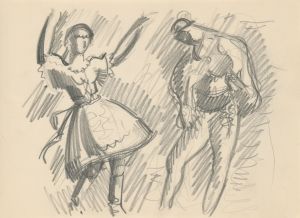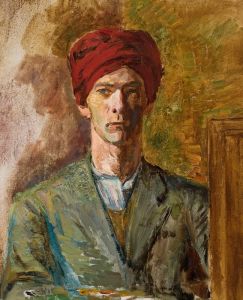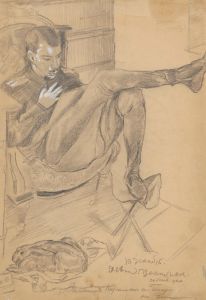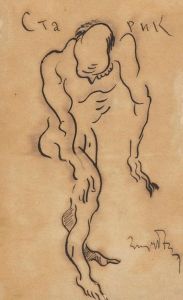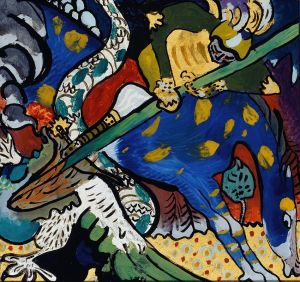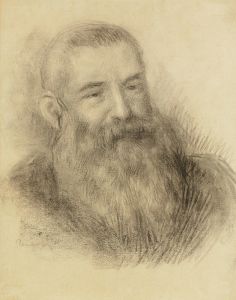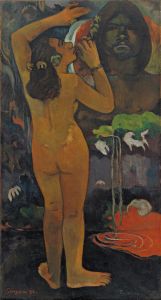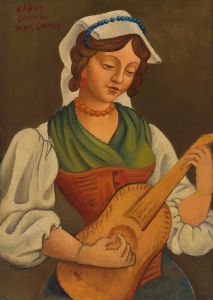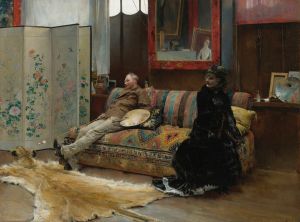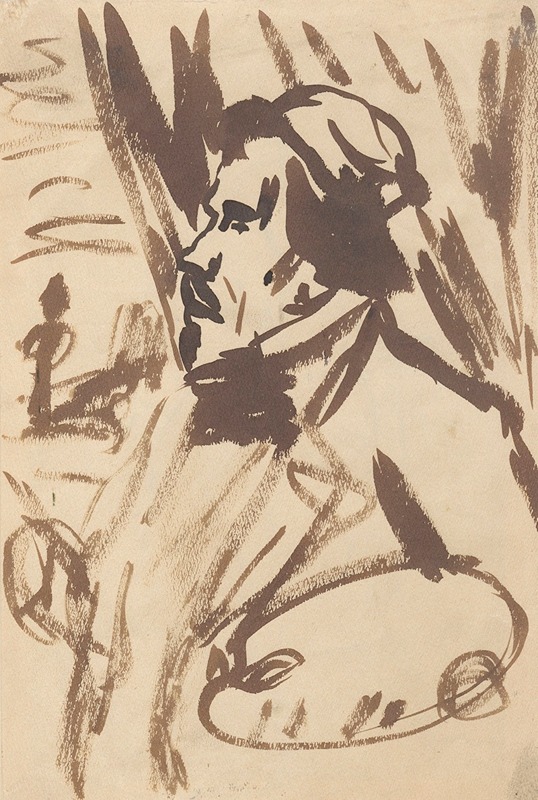
Drawing acc. to Delacroix’s self-portrait
A hand-painted replica of Zygmunt Waliszewski’s masterpiece Drawing acc. to Delacroix’s self-portrait, meticulously crafted by professional artists to capture the true essence of the original. Each piece is created with museum-quality canvas and rare mineral pigments, carefully painted by experienced artists with delicate brushstrokes and rich, layered colors to perfectly recreate the texture of the original artwork. Unlike machine-printed reproductions, this hand-painted version brings the painting to life, infused with the artist’s emotions and skill in every stroke. Whether for personal collection or home decoration, it instantly elevates the artistic atmosphere of any space.
Zygmunt Waliszewski was a Polish painter known for his vibrant and expressive works, often drawing inspiration from the European art tradition. One of his notable pieces is "Drawing acc. to Delacroix’s self-portrait," which reflects his engagement with the works of past masters and his ability to reinterpret them through his unique artistic lens.
Waliszewski was born in 1897 in Saint Petersburg, Russia, and later moved to Poland, where he became an influential figure in the Polish art scene. He studied at the Academy of Fine Arts in Kraków, where he was exposed to various artistic styles and movements. His work is often associated with the colorism movement, which emphasized the use of vivid colors and expressive forms.
"Drawing acc. to Delacroix’s self-portrait" is a testament to Waliszewski's admiration for Eugène Delacroix, a leading figure of the French Romantic movement. Delacroix was known for his dynamic compositions and bold use of color, qualities that Waliszewski sought to emulate and reinterpret in his own work. By creating a drawing based on Delacroix's self-portrait, Waliszewski not only paid homage to the French master but also explored the interplay between past and contemporary art.
The drawing showcases Waliszewski's skill in capturing the essence of Delacroix's style while infusing it with his own artistic sensibilities. He employed a range of techniques to convey the emotional intensity and dramatic flair characteristic of Delacroix's work. The piece reflects Waliszewski's interest in the human form and his ability to convey personality and emotion through portraiture.
Waliszewski's reinterpretation of Delacroix's self-portrait is also indicative of the broader trends in early 20th-century art, where artists frequently revisited and reimagined the works of their predecessors. This practice allowed them to engage in a dialogue with the past while contributing to the evolution of modern art. Waliszewski's work exemplifies this approach, as he drew inspiration from a variety of sources, including the Old Masters, while developing his own distinct style.
Throughout his career, Waliszewski remained committed to exploring the possibilities of color and form, often experimenting with different techniques and mediums. His work is characterized by a vibrant palette and a dynamic approach to composition, which can be seen in "Drawing acc. to Delacroix’s self-portrait." This piece, like many of his others, demonstrates his ability to blend tradition with innovation, creating art that is both rooted in history and forward-looking.
Zygmunt Waliszewski passed away in 1936, but his contributions to Polish art continue to be celebrated. His reinterpretations of classic works, such as "Drawing acc. to Delacroix’s self-portrait," highlight his role as a bridge between the art of the past and the emerging modernist trends of his time. His legacy is preserved in numerous collections and exhibitions, where his work continues to inspire and engage audiences.





